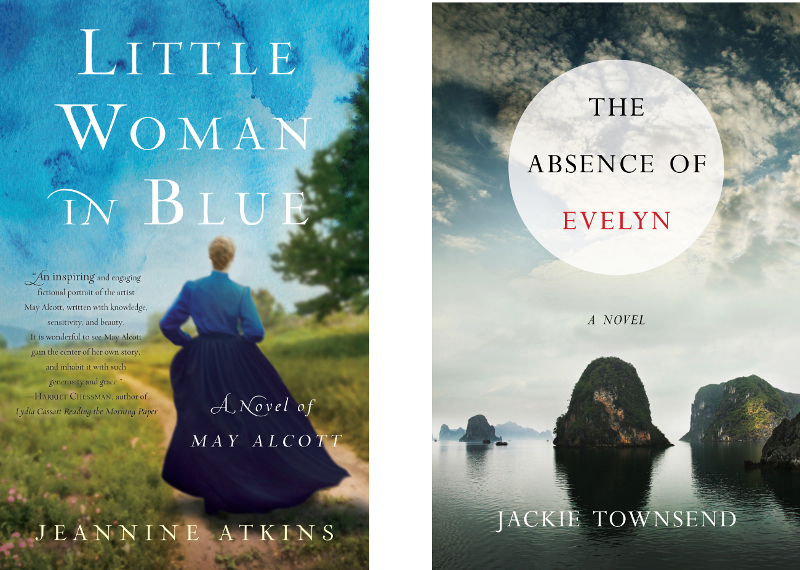Feature
The Art and Effort Behind Beautiful Cover Designs
Why She Writes Press Does Covers So Well
As the publisher of two imprints that receive regular praise for our cover designs, I end up spending a lot of time thinking about covers, negotiating cover designs with my authors, and talking to people about the importance of covers. Don’t believe for one second that books aren’t judged by their covers. They absolutely are, especially by book industry people, who will write a book off for looking amateur based on cover design alone.
Cover design is a tricky business for publishers because most publishers really do want their authors to love their covers. But they also want what’s best for the book, and sometimes what an author envisions for their book and what a publisher thinks is best don’t meet in a happy middle place. Over my many years in the publishing industry, some of the most contentious conversations I’ve had with authors have been over their covers, and perhaps rightfully so. I see a positive aspect to those conversations in that they showcase how much both sides care—and there’s always a resolution.
I have half-joked in presentations and conversations with industry folks that we’re in the business of saving authors from themselves when it comes to cover design. The reason I feel this to be true—in some, certainly not all, cases—is that a lot of amateur designers fancy themselves book cover designers. I’ve also encountered authors who have someone in the wings who is a “graphic designer” who’s done brochures and who’s savvy with memes, but that doesn’t mean they know book design.

Book design is a breed all its own. It’s an art, yes, but it’s also a skill. Complicating matters is the fact that cover design is subjective, no doubt, but industry folks also know a good cover when they see it, and there are certain tells that are easily avoidable.
For instance, in book publishing, for the most part, you do not include the word “by” in front of the author name. There is no colon between the title and the subtitle. Titles and subtitles, while more an editorial than design function, can also showcase amateurism, too. Titles that are too literal or cliché pose problems that usually extend to the cover design. Subtitles that are too descriptive or that complicate things by straddling genres are also problematic. I’ve seen too many memoir subtitles that don’t sound like memoirs, but instead self-help books, or like they’re full sentences that belong in the book’s introduction rather than on its cover.
Too often you see book covers whose primary design revolves around the book’s title. Chip Kidd, Knopf’s famous and talented associate art director, talks about this very problem in his TED talk, “Designing books is no laughing matter. OK, it is.” The story he shares in the talk is about a design class he took in which the teacher wrote the word “apple” on the board, then flashed an image of an apple. Then he covered up the word and said, pointing to the image, “You can either show this.” Then he showed the word and covered up the image and said, “Or write this.” His message was clear: Do not do both. And yet so many book covers do exactly that.
Remember that simple is good. Conceptual is good. Your book cover doesn’t need to tell the whole story of your book. We ask our authors at She Writes Press and SparkPress to fill out cover memos, and I’m often struck by the specificity of what they want on their covers. In a recent memo the author attached a photograph of an actress saying she hoped the woman on the cover could resemble her; another sent a list of things she hoped could appear on the cover—a certain kind of car, a woman standing with her hands on her hips, a particular flower. These kinds of directions are too literal, and designers saddled with these kinds of instructions will be limited in their creative execution.

Another mistake I see authors making is trying to be too different. They’ll spend a lot of time explaining how they specifically don’t want their book to have such-and-such an image or schema because the genre is full of that. I’m not advocating for copycatting, but there’s also generally a reason you see certain kinds of genres replicating certain design trends. We often feature women on our contemporary fiction and historical fiction covers because it’s on trend. Readers want to identify with the character—and by and large these covers are incredibly well received. Similarly, in memoir, it’s not always necessary or preferable for a cover to have a personal image. When they work, personal images can be powerful, but too often authors get caught up in the sentimentality of their own image, or a family image, being on the cover. Some of the most powerful memoir covers She Writes Press has published are those for which we’ve chosen stock images that speak to the themes of the story.
I attribute the success of our cover program to our designers, of course. We’re lucky to have an incredibly talented creative director in Julie Metz, who brings years and years of industry experience to the table. When it comes to book design, hire someone with book design experience. And then consider consulting someone who works in the industry. Show your cover concepts to booksellers and librarians and see what they say. Print out your cover, wrap it around a book you already have on your shelf, and take it to your local bookstore to see how it holds up against the designs on the shelves.
You have one shot to get it right. I always encourage self-published authors I work with to spend the money for a great cover design. You’ll live with this cover for the rest of your life. Your book is an extension of you and represents your professionalism. You don’t want to hear feedback after the book is already printed and for sale that it looks amateur. It matters a great deal that your book stand proud alongside any other published book—and better yet if it stands out and makes a reader say, “Wow, I love this cover.”
 Brooke Warner is publisher of She Writes Press and SparkPress, president of Warner Coaching Inc., and author of Green-light Your Book, What's Your Book?, How to Sell Your Memoir, and the co-author of Breaking Ground on Your Memoir. Brooke’s expertise is in traditional and new publishing. She is the former Executive Editor of Seal Press and currently sits on the boards of the Independent Book Publishers Association, the Bay Area Book Festival, and the National Association of Memoir Writers. She writes a monthly column for Publishers Weekly and blogs actively on Huffington Post Books and SheWrites.com. She lives and works in Berkeley, California.
Brooke Warner is publisher of She Writes Press and SparkPress, president of Warner Coaching Inc., and author of Green-light Your Book, What's Your Book?, How to Sell Your Memoir, and the co-author of Breaking Ground on Your Memoir. Brooke’s expertise is in traditional and new publishing. She is the former Executive Editor of Seal Press and currently sits on the boards of the Independent Book Publishers Association, the Bay Area Book Festival, and the National Association of Memoir Writers. She writes a monthly column for Publishers Weekly and blogs actively on Huffington Post Books and SheWrites.com. She lives and works in Berkeley, California.

